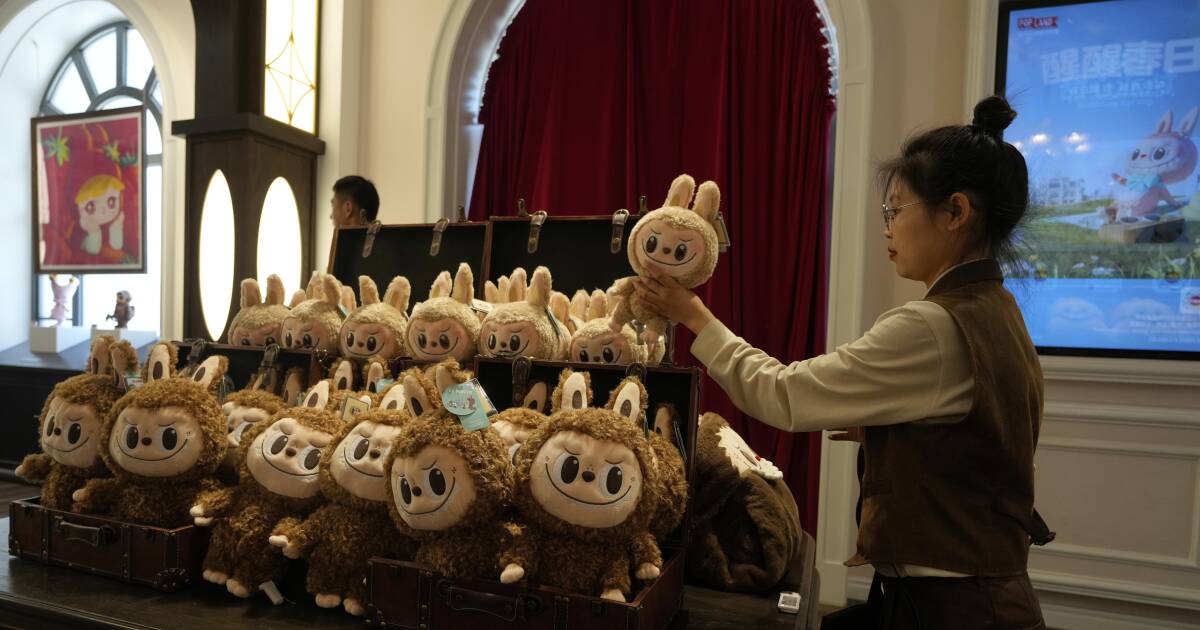The newest craze for families with children under age 15 is something called Labubu dolls, which is the subject of many unboxings on Tik Tok. The newest dolls were even featured on NPR’s program, “Wait, Wait, Don’t Tell Me.”
To find out what a Labubu is, GBH’s Henry Santoro invited Alexander DePaoli, an Associate Professor of Marketing at Northeastern to join him on GBH’s Henry in the Hub program.
Henry Santoro: As best you can, will you describe a Labubu for those who do not know what it is?
Alexander DePaoli: It is a line of toys and accessories from the Chinese toy company Pop Mart. They are customizable, they are fuzzy, they’re described as monster elves. And they are generally characterized by being cute, but not too cute, just a little off. And that’s part of their appeal.
Santoro: And they are taking the world by storm right now?
DePaoli: Yes, yes, they are.
Santoro: For some reason, people love to hang these things off their backpacks or their purses or pocketbooks.
DePaoli: Whatever… keychains, purse charms, bag charms… That’s kind of the big appeal right now for them. They do also have figurines and plushies. And there was a life-size one that recently made headlines for selling for some absurd amount of money.
Santoro: And I’m sure there’s going to be a Labubu Halloween costume?
DePaoli: I have no doubt.
Santoro: When did this begin? When did the whole craze begin for Labubu?
DePaoli: Labubu itself is almost 10 years old at this point, shockingly. But the craze started last year — I believe around April — when they were first spotted being worn by a member of Blackpink, the K-pop group and its member named Lisa. I think that that was sort of a big kickoff.
And then you saw other celebrities like Dua Lipa and Rihanna also sporting these accessories that helped to spread the appeal across the West. And that sort of kicked off the fad for it outside of China —potentially only growing because supposedly only 40% of their sales this past year were outside of China and it was already a 1.8-billion-dollar brand.
Santoro: And I’m sure that this company in China can thank TikTok for a lot of their business.
DePaoli: I think absolutely, yes. TikTok has been very helpful for sort of spreading both the toy itself and the kind of culture that thrives on that sort of off appeal of the toy.
Santoro: How long do these crazes last? Do we know?
DePaoli: It’s always hard to say.
Santoro: But, you can go back years and see how crazes like this happen, like Beanie Babies, Cabbage Patch Kids…
DePaoli: I think an important distinction, and this is true for Jelly Cat, and I think it’s especially true for Labubu, is that they’re not just toys, right? Cabbage Patch Kids is a toy, versus Labubu is an accessory as well. So, you sort of have these multiple pathways to desire, multiple pathways of use, if you will. They feel more functional to the buyer, and because of that, they have more staying power. They’re kind of easier to justify buying and holding onto, but I think that you will not see it disappear as thoroughly as a straight toy.
Santoro: And we probably won’t see it show up in a Happy Meal.
DePaoli: That I can’t promise.
